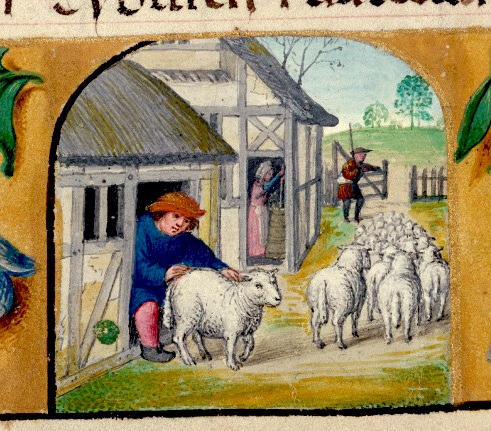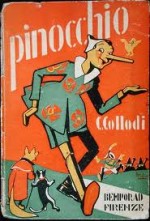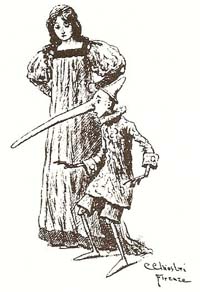Hands up if you like January in Scotland … no, I didn’t think so. It’s nobody’s favourite time of the year – dark days with no signs of spring on the horizon. However on the 25th is a wee light.
Every 25th January, Scotland celebrates one of its most important events: the birth of the Caledonian Bard. Robert Burns short life had a major impact on Scottish society.
25th January is Burns Night, the night when Scots, expatriates, foreigners in Scotland and other people around the world pay homage to the poet with the traditional Burns supper. Burns suppers are most common in Scotland and Northern Ireland; however, there has been a surge in Burns’ Night celebrations in the UK events industry seeing the evening being celebrated outside their traditional confines of Burns Clubs, Scottish Societies and expatriate Scots. The first suppers were held in memoriam at Ayrshire at the end of the 18th century by Robert Burns’ friends on 21 July, the anniversary of his death, and have been a regular occurrence ever since. The first Burns Club was founded in Greenock in 1801 by merchants born in Ayrshire, some of whom had known Burns. They held the first Burns supper on what they thought was his birthday, 29 January 1802, but in 1803, they discovered in Ayr parish records that his date of birth was 25 January 1759. Since then, suppers have been held on 25 January.
This is a day when I wouldn’t begin to think about what to have for supper. Burns supper includes haggis, Scotch whisky, and the recitation of Burns’s poetry. The men wear the traditional Scottish outfit: kilt, sporran with the dagger, Ghillie shoes and woolly socks. The important element in Burns Night is poetry and the drama involved in reciting it. All are conveniently moistened with whisky, so the melodramatic thespians are given free rein. This is what makes this event unique. Poetry, these days, is relegated to the academic and the historical but here resurfaces with all the strength given by it being spoken.
Haggis forms an integral part of the Burns supper celebrations. Burns immortalised the haggis in his poem Address to a Haggis, which starts “Fair fa’ your honest, sonsie face, Great chieftain o’ the pudding race!”
Scotland’s National dish is the source of endless jokes and horror stories, yet continues to provoke curiosity around the world. Ask any Scotsman the age-old question “What is a haggis?” and his typical response would be something like…“It’s a small four-legged creature that lives in the Highlands and has two legs shorter than the others so it can run around the mountains without toppling over. It can easily be caught by running around the hill in the opposite direction.”
Well, it appears that the national joke is now beginning to backfire a little, as according to a 2003 on-line survey, one-third of American tourists visiting Scotland thought that a haggis was a wild animal and almost a quarter arrived in Scotland thinking they could catch one! So, if you wish to preserve your belief in little furry creatures, or if you have just purchased tickets for a “Wild Haggis Hunt”, please do not read any further!
Perhaps it is because the truth is a little more frightening than fiction and too much for a Scotsman to admit that his national dish consists of a sheep’s stomach stuffed with diced innards. To be a little more precise, a haggis is normally made up of the following ingredients: a sheep’s ‘pluck’ (its heart, liver and lungs), minced with onions, oatmeal, suet, salt and spices, all mixed with a stock and traditionally boiled in the animal’s stomach for around an hour. As unpleasant as this may sound, the end result is a culinary masterpiece which, should, of course, be washed down with a ‘dram’ of the national drink.
As the history of haggis and also people’s reaction to this pudding is so interesting I thought it was well worth adding some additional information about this national dish. As I discussed previously the haggis hasn’t always been a purely Scottish dish, nor has it been universally loved even in Scotland

The Great Haggis – The Capture of The Great Haggis, 1743 http://www.thehaggis.com/EZ/sh/sh/page07.php?PHPSESSID=3poforr9bconq8kl6gcjdtq2i1
One factor in this is that by the end of the 18th-century haggis was firmly associated with Scotland and this was a great problem for many people as Scotland had been part of Britain since 1707. Another issue is that a haggis is a great big lump of steaming offal and then as now this is a difficult thing for many people as the following description of meals served in a mid-18th century Scottish nobles household indicates:
“There was a very long table loaded with a great variety of dishes, some of the most luxurious, others of the plainest—nay, coarsest kind : these were very oddly arranged; at the head were all the dainties of the season, well dressed and neatly sent in ; about the middle appeared good substantial dishes, roasted mutton, plain pudding and such like. At the bottom coarse pieces of beef, sheep’s’ heads, haggis’s, and other national but inelegant dishes were served in a slovenly manner in great pewter platters; at the head of the table were placed guests of distinction, to whom alone the dainties were offered …”
We should also keep in mind that the haggis of this period was in fact quite different to those of today. If we look at archetypal haggis recipe from the 18th century, this difference isn’t at first obvious; in fact, the ingredients are still quite typical of a “modern” haggis. Traditionally a Chieftain or Laird may have had an animal or two killed for a particular feast, the offal being passed to the slaughterman as his payment. Haggis was always a popular dish for the poor, cheap cuts of nourishing meat that would otherwise have been thrown away. This is a salute to the national dish of Scotland, as immortalised by the Bard himself – Robert Burns. The honoured reader now seizes their moment of glory by offering a fluent and entertaining rendition of To a Haggis. The reader should have his knife poised at the ready. On cue (His knife see Rustic-labour dight), he cuts the casing along its length, making sure to spill out some of the tasty gore within (trenching its gushing entrails). Warning: it is wise to have a small cut made in the haggis skin before it is piped in. Instances are recorded of top table guests being scalded by flying pieces of haggis when enthusiastic reciters omitted this precaution! Alternatively, the distribution of bits of haggis about the assembled company is regarded in some quarters as a part of the fun… The recital ends with the reader raising the haggis in triumph during the final line Gie her a haggis. In this cold, late January, whisky, dancing and carbohydrates help to maintain the body at a reasonable temperature. The poems help maintain the national intellectual passion burning.
Raise a glass and shout:
The haggis!
Toasts are important in Burns Night and there will be many throughout for which I would recommend the traditional whisky.
Ye Pow’rs, wha mak mankind your care,
And dish them out their bill o’ fare,
Auld Scotland wants nae skinking ware
That jaups in luggies;
But, if ye wish her gratefu’ prayer
Gie her a haggis!
Today, whether we’re single, married, with or without children, we all have to eat supper in Scotland. The evening should be the highlighted of this day. This day should be peaceful, pleasurable and profitable, it’s time to celebrate. Just as there many food categories, there are difficult types in; make-do, carryout, home-style, and feasts. All of us make do something, but the lifestyle choice, I opened a cookbook up and I cooked my Macsweens haggis. Macsweens hagins from Jo Macsween the famous family of Edinburgh haggis makers. Jo expertly guides me through the haggis, neeps, tatties and Burns Night and the rules and demonstrates that haggis is a versatile ingredient. She even dares to challenge me the long-standing association of haggis with whisky and recommends more a new coterie of drinking companions.

source: http://www.macsween.co.uk/
There are 10 tips
- Avoid haggis explosions! Many people don’t realise that haggis is already cooked. So all you have to do is heat it up until it’s pipping hot.
- Wrapping it in foil first helps to contain the contents if I am unlucky enough to burst it. I’ve to remember don’t cook it at too high a temperature. Haggis prefer a wet, steamy heat to a dry one, so if you have a double pan steamer or steam oven, use that. If not, the next best thing is to place the haggis in a dish with water and place in the oven.
- Hot plates! There is nothing worse than lukewarm haggis. By preheating your plates, everyone will enjoy it nice and hot!
- Invite a haggis virgin! Very difficult I need to spread the love, and it’s really satisfying to see the moment of truth when they wonder why they waited so long to try it.
- I cannot forget the veggies! And I don’t just mean the neeps and the tatties.
- I’ve to share the address To a Haggis – it’s great fun if everyone takes a verse each. Special if I can to pronounce the Scots language correctly. Not even the Scots themselves always get it right.
- OK go global. Facebook, tweeter, blog, haggis is international.
- Don’t waste the left-overs. I have it reheated for breakfast or try making haggis potato cakes, haggis bubble and squeak or haggis scones yummy!
- Don’t feel compelled to drink whisky. And my advice is not to pour it over the haggis – it’s a waste of good haggis and good whisky (although if you haven’t followed my advice in step 1, it might just make it more palatable). I’ll try might beer or wine??? – either white or red – to really bring out the flavour and complement the spicy sweetness of the haggis.
- The most important part I cannot forget the entertainment. I don’t have to follow the traditional pattern, and if one of your guests has a party piece, I’ll encourage them to ‘gie it laldy’. …………To a Haggis!
I know that without food we would die, however without fellowship life is not worth living.
Come, the celebrating Gie her a haggis!
Ella





























